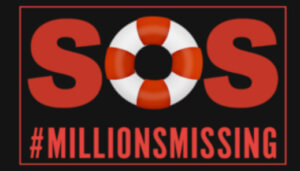Want to know more about the research centers and data center being planned for ME/CFS by the National Institute of Health (NIH)? Directors at the NIH discussed the research centers and answered questions from people with ME along with researchers in a phone call on Feb. 2.
The NIH will provide $30 million over the next 5 years – or $6 million per year – to fund two to three research centers and a data management center. The goal of the research centers is to create a collaborative process for investigating the cause of and treatment options for ME/CFS.
“We see this as a starting point for increasing the infrastructure necessary to address this complex challenge, and to really build the field up,” said Joseph Breen of the National Institute of Allergy and Infectious Diseases (NIAID) at the NIH, and a representative of the Trans-NIH ME/CFS Working Group. “We want them to be centers of information for clinical researchers, basic researchers, academics, practicing physicians, patients and lay public. We hope these centers will provide real leadership across the country and expertise in this area.”
The data management center will enable researchers across the centers to share data with each other. “The centers program will challenge investigators to come together to design a project that they will do together,” said Walter Koroshetz, director of the National Institute of Neurological Disorders and Stroke (NINDS) and chair of the Trans-NIH ME/CFS Working Group. “A coordinated attack on ME/CFS is really in demand at this time.”
What Case Definition will be used for studies? Where will the centers be located? How does this affect clinical care?
- The following two case definitions will be used to identify patients for studies at the research centers: The Canadian Consensus Criteria and the IOM criteria.
- The NIH is a research organization and so it doesn’t directly affect clinical care. However, Koroshetz said he expects the research centers will not only enroll patients for research studies but also care for a larger number of people with ME/CFS on the side, although Joseph Breen seemed less certain about this commitment later in the call.
“The sideline expectation is that [research centers] will raise the view of ME/CFS among some of the major hospitals and universities and provide the evidence that will then get back to the doctors and lead to a change in practice,” Koroshetz said. “The centers are mandated to have collaboration with patients and patient advocacy groups. When these begin, the investigators will look for collaborators in the patient community to help with application and research.” - The NIH has not yet determined where the research centers will be located and the locations will be based on the successful applications. Koroshetz assured that once the locations are decided, the NIH will disseminate information about them to nearby hospitals and universities.
- Money for the research centers and data center will not replace the typical application process for researchers to apply for grants to study questions involving ME/CFS, which takes place three times per year, assured Koroshetz.
Researchers interested in learning more about the grant application process should attend a webinar for prospective applicants on Feb. 13 at 3 p.m. ET. Visit here for more information.
People with ME posed the following questions on the call:
How do we get out of this catch-22 where there are no clinical trials, no pharmaceutical investment and no FDA-approved drugs? How can we make clinical trials happen now – not in 3-5 years from now?
Koroshetz: Certainly we feel the urgency from the people who are suffering now. This is a constant tension at NIH. We have to think about short-term and long-term and have to be realistic about the chances of success going into clinical trials.
From my experience, failed clinical trials are a disappointment when they don’t show what you hope for. Multiple failed clinical trials can destroy an entire field. For example, with stroke, there were multiple failed trials in the ’90s that stopped the industry from having any interest…
A long-term approach has the best chance of success but it takes a long time. But there may be instances where it makes sense to try something in the short-term, even with limited knowledge of the effects of intervention. It’s tricky to do but we definitely do those because we have a commitment to those suffering now in the short-term. We are always open to bringing this in and putting it in front of peer review.
The [research] center approach is the best one to help build up an army of researchers that will launch successful clinical trials. The centers will help bring in new people to the ME/CFS field, including seasoned clinical trialists.
Although the program itself is not for clinical trials, the RFAs mention explicitly that they want to build a path to clinical trials. That path is open. We just need to grease that path with the knowledge for a successful trial.
Is the NIH doing any research to look at the connection between ME/CFS patients and cancer?
Koroshetz (paraphrased): There are some research grants to look at the connection between immunology and cancer but not many. Those grants are searchable at NIH Reporter.
Is the funding enough?
The NIH will provide $30 million over the next 5 years – or $6 million per year – to fund the 2 to 3 research centers and data management center.
While #MEAction is happy about the establishment of the research centers, the funding falls short of what is needed to really get the science off-the-ground.
“I’m a little worried about the amount of money being put up at the beginning,” said geneticist Ronald Davis, who is helping to lead the End ME/CFS project at the Open Medicine Foundation. “I’m confident I could use 10 times that amount just in our group of people that could very effectively do good research with that amount of money.”
An activist with ME/CFS called the funding levels “a kick in the face.” She called on the NIH to act with urgency and to commit serious funding to the research centers.
“I am alarmed by the lack of urgency and the low level of funding that’s been put forth. I know you’ve worked hard on this, but I’ve been a patient for almost 40 years, and that’s 40 years of my life that have been taken from me by, not the disease, but the inaction of NIH. And I don’t think that I and people like me should be further punished by [NIH] plodding along at a snail’s pace.
Read her full testimony here.
Updates from the Trans-NIH ME/CFS Working Group:
The Common Data Element project and more:
- The Trans-NIH ME/CFS Working Group is working on a Common Data Element (CDE) Project for ME/CFS to establish a common language or terminology for investigators to use in their studies of ME/CFS. This is important so that researchers investigating the same problem are using the same terminology to discuss their results.
The CDE project for ME/CFS is comprised of 55 representatives, including researchers, clinicians, patients and advocates. The group has had one training call, and will hold another one in a few weeks. The group will divide into sub-groups to define terms for the various domains of ME/CFS such as post-exertional malaise and sleep dysfunction, etc. Once the CDE has been developed, it will be released to the public for comment.
- Progress on the NIH intramural clinical study is being made with the first patient expected to arrive for study in March. Several healthy controls have already come in and five patients have been identified thus far for the study. The NIH intramural clinical study is examining the clinical and biological characteristics of the disorder to gain understanding of its cause and progression. Read more here.
- The NIH has plans to “talk about ME/CFS at meetings where it might not have been discussed previously,” said Koroshetz. NIAID is hosting a half-day session called “Insights into the Immunology of ME/CFS” at a conference on June 14th in Chicago, and have invited four well-known ME/CFS and immunology experts to speak.
Image of the NIH campus.





6 thoughts on “NIH answers questions about research centers for ME”
Many thanks for this article.
It’s evident some at NIH have good intentions, and have grasped some of the issues. However, it is also evident they do not understand they need to be much, much, much more proactive about medical education and establishing a proper standard of care. Under “What Case Definition will be used for the studies?” Dr. Koroshetz says:” The sideline expectation is that [research centers] will raise the view of ME/CFS among some of the major hospitals and universities and provide evidence that will then get back to the doctors and lead to a change in practice.”
Logical thinking as far as it goes, but this process is osmosis. Why does raising the view of ME have to be a sideline? NIH is hoping the info will trickle into medical practice consciousness via osmosis. This could take decades! How about taking a proactive approach? Apparently, in years gone by, NIH took a proactive approach in disseminating the mistaken concept that ME is psychogenic. What’s stopping NIH and others from now being proactive about the true nature of ME? PWME are tired of the harmfull micro and macro aggressions when we engage with the health care professions and others. At this rate, it will be decades more before this aggression and hostility stops!
NIH should ramp up, or establish a medical education program about ME, and the appropriate standard of care using the Canadian Consensus Criteria. Medical officials need to see that the CCC is endorsed by NIH!
Thanks very much again for this article!
“What’s stopping NIH and others from now being proactive about the true nature of ME?”
The Policy of Non-Research is stopping them. It remains firmly in place. Despite decades of advocacy, the policy has not changed, although they are trying to change their image. It is time for a new strategy: a lawsuit against HHS, NIH, and CDC. Although the Feds were smart enough to exempt themselves from the Americans With Disabilities Act, they are still covered by Section 504 of the Rehabilitation Act:
“No otherwise qualified individual with a disability in the United States … shall, solely by reason of her or his disability, be excluded from the participation in, be denied the benefits of, or be subjected to discrimination under any program or activity receiving federal financial assistance or under any program or activity conducted by any Executive agency…”
Many M.E. patients are clearly disabled. We have clearly been denied the benefits of NIH medical research. We have clearly been subjected to discrimination by government agencies and society at large, as a result of CDC and NIH actions. And those actions and refusals-to-act are clearly violations of the plain language of the law.
This law is used frequently by parents against state and local education authorities who refuse to properly provide for special needs students. It’s time for us to use it, too.
Have you made a thorough study of buildings with “Closed Air Systems”… which just recycle the same air over and over? There are many (hopefully now some “were”) U.S. Federal buildings with this type of system. This suggestion/idea has been brought up here and there for around 20 years now, but seems to fall by the wayside or hidden … because of the costs involved in correcting the problem (?) … or admitting that there “is” such a problem and taking responsibility for those employees affected/infected (?). The immune system can take just so many constant, unrelenting attacks before it breaks/shuts down.
You can objectively assess to first order “Closed Air Systems” that might recirc only or not recirculate by using a low cost CO2 meter for <$100 to monitor CO2 in air. Outside is 400 ppmv or higher. Inside might often be 600 ppm due to exhaled breath, and if poor ventillation, can go to over 1000 ppmv and start to affect ability to think clearly. I own two monitors and have found high many times, in which case I open windows or turn on recirculation and in some cases you might control and add more makeup air if commercial building.
It will be interesting to see how long these initiatives last. Three Cooperative Research Centers were setup sometime around 2000. By the end of 2003, they were all shutdown.
I have yet to come across any explanation or even a poor excuse for the closure. The minutes for the very first CFSAC meeting state, “the centers [will] not be re-bid because they are located in Section 39, which was disbanded.” I have no idea what Section 39 is – perhaps it is located at Area 51?
There were some other very interesting events in 2003. That was the year the Canadian Consensus Criteria was published – a threat to the psychobabble theory of “fear of exercise”. But the Wessely Crowd struck back by announcing the PACE trial in the same year.
Correlation is not causation, of course. Still, I keep wondering if the research centers were shut down because they were starting to show results. Specifically, I am thinking about Peckerman 2003 “Abnormal impedance cardiography predicts symptom severity in chronic fatigue syndrome.” [1]
As I understand it, he was developing a test at the request of Social Security that would have been used to objectively measure a patient’s degree of disability, thus simplifying the disability benefit application process and disproving the psychobabble theory. That would’ve been a real problem for poor ole Sir Simon and PD White, which was oh so conveniently solved when the research centers were mysteriously shut down.
[1] https://www.ncbi.nlm.nih.gov/pubmed/12920435
Thank you very much Jimells for noting Peckerman’s work about abnormal impedance cardiography!!! I think this testing would go a significant way toward proving the disability of persons with ME. That’s perhaps why it has not gained traction…no one wants to know we’re really sick!
Dr. Bruce Carruthers, the lead author for the Canadian Consensus Criteria and the International Consensus Criteria, used to refer PWME to the Cardiovascular Physiology Rehabilitation Lab at the University of British Columbia in Vancouver, BC, for this test. I don’t know, but this lab may still be doing this testing on their impedance cardiograph machine.
The test is an orthostatic stress test: the patient is wired up to the machine, and lays down for about 10 minutes, and then stands up for about the same length of time. All the while the impedance cardiograph is measuring blood pressure, heart rate, stroke volume, cardiac volume, and measures called MAP, PEP (pre-ejection period), LVET (left ventricular ejection time), and PEP/LVET.
Page 1 of the CCC Overview found on the National ME/FM Action Network website: http://www.mefmaction.com, says: ” Objective postural cardiac output abnormalities correlate with symptom severity and reactive exhaustion.”
This testing can amongst other things show decreases in stroke volume leading to cardiac output decreases with change from supine to standing. Even non-medical people like myself, can glean from this that a decrease in cardiac output from supine to standing doesn’t appear to represent healthy functioning.
Thank you very much again for mentioning this testing. Quite some time ago, I wrote to two sets of ME researchers, and two well established non-profit support groups re this testing. I’m not sure what the upshot from this will be. In 2008, this testing was still called “new with relatively limited data available.” I don’t know why researchers don’t pick up on this testing. The machine is expensive, but I believe the Lab at UBC already had the machine in use for testing before Dr. Carruthers started using it. There have to be other impedance cardiographs spread around North America, that could be put to use in following up on Peckerman’s research!
Comments are closed.